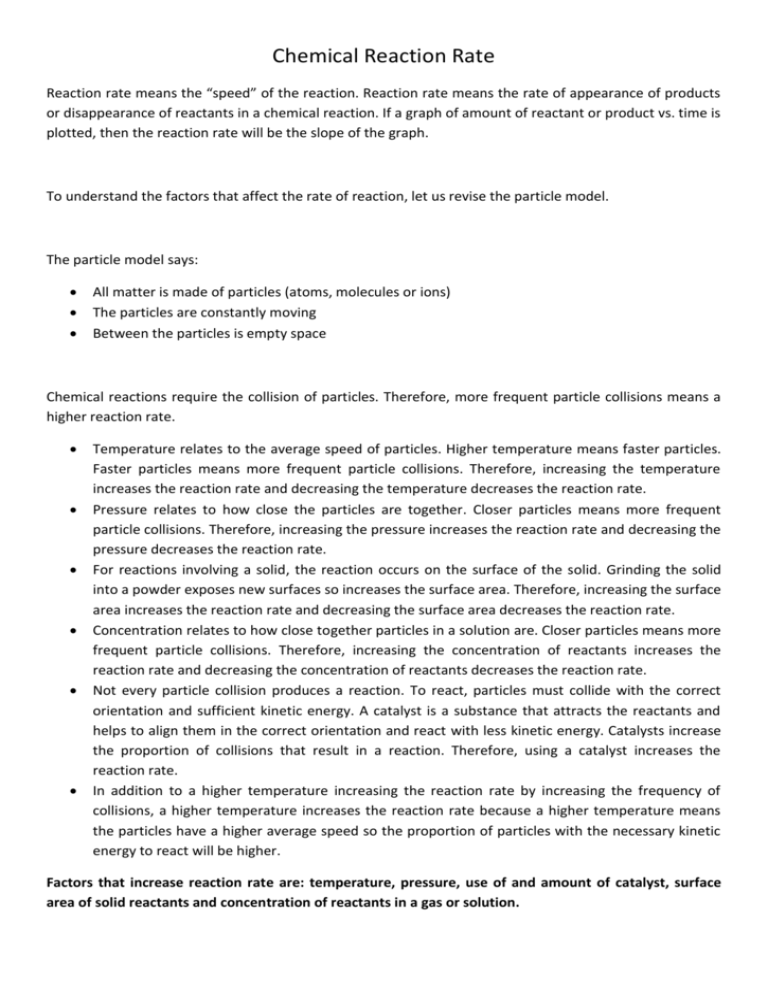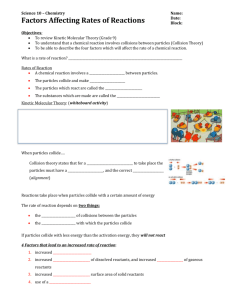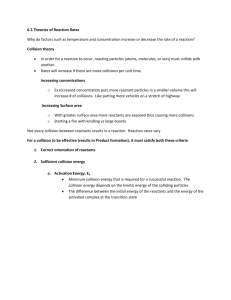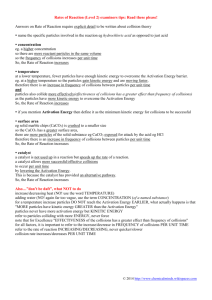Chemical Reaction Rate
advertisement

Chemical Reaction Rate Reaction rate means the “speed” of the reaction. Reaction rate means the rate of appearance of products or disappearance of reactants in a chemical reaction. If a graph of amount of reactant or product vs. time is plotted, then the reaction rate will be the slope of the graph. To understand the factors that affect the rate of reaction, let us revise the particle model. The particle model says: All matter is made of particles (atoms, molecules or ions) The particles are constantly moving Between the particles is empty space Chemical reactions require the collision of particles. Therefore, more frequent particle collisions means a higher reaction rate. Temperature relates to the average speed of particles. Higher temperature means faster particles. Faster particles means more frequent particle collisions. Therefore, increasing the temperature increases the reaction rate and decreasing the temperature decreases the reaction rate. Pressure relates to how close the particles are together. Closer particles means more frequent particle collisions. Therefore, increasing the pressure increases the reaction rate and decreasing the pressure decreases the reaction rate. For reactions involving a solid, the reaction occurs on the surface of the solid. Grinding the solid into a powder exposes new surfaces so increases the surface area. Therefore, increasing the surface area increases the reaction rate and decreasing the surface area decreases the reaction rate. Concentration relates to how close together particles in a solution are. Closer particles means more frequent particle collisions. Therefore, increasing the concentration of reactants increases the reaction rate and decreasing the concentration of reactants decreases the reaction rate. Not every particle collision produces a reaction. To react, particles must collide with the correct orientation and sufficient kinetic energy. A catalyst is a substance that attracts the reactants and helps to align them in the correct orientation and react with less kinetic energy. Catalysts increase the proportion of collisions that result in a reaction. Therefore, using a catalyst increases the reaction rate. In addition to a higher temperature increasing the reaction rate by increasing the frequency of collisions, a higher temperature increases the reaction rate because a higher temperature means the particles have a higher average speed so the proportion of particles with the necessary kinetic energy to react will be higher. Factors that increase reaction rate are: temperature, pressure, use of and amount of catalyst, surface area of solid reactants and concentration of reactants in a gas or solution.









